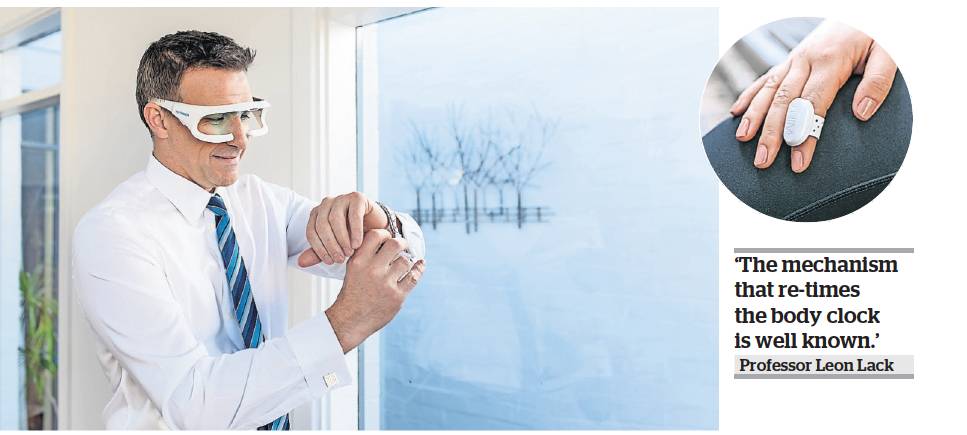Bright idea promises improved sleep
A team led by an Australian sleep expert has designed devices that can be used at home to reset the body clock.
Insomnia or an unsatisfactory sleeping routine has many adverse effects and longterm problems can include depression. It is often a result of our body clocks being out of sync with when we need to sleep and in need of being re-timed.
Professor Leon Lack of Flinders University has been teaching and conducting research in the areas of sleep, circadian rhythms and insomnia since 1980. “We have known for more than 30 years that we could re-time the body clock using light therapy,” he says.
With a team of engineers, he designed Re-Timer – a wearable light-therapy device that resembles a pair of glasses, which can be used anywhere and can be worn over a pair of standard glasses.
Small LEDs, placed close to the eyes, emit blue-green light, which trigger neurotransmitters in the brain and reset the body clock and sleep cycle.
“The mechanism that re-times the body clock is well known,’’ says Lack. ‘‘Most of the retina’s function is to convert light for vision, but a few cells tell another part of the brain whether it is light or dark. When your eyes receive blue-green light, it sends a signal to the brain to re-time your daily rhythms.”
Light therapy helps people adjust back to a normal sleeping pattern. For example, if you want to fall asleep earlier, wear Re-Timer for an hour shortly after waking. If you wake too early, wear it for an hour just before bedtime.
Re-Timer can be worn on planes to overcome jet lag, and can be used to re-time the body clocks of shift workers, help people who suffer from seasonal affective disorder (SAD, or winter depression) and also by athletes who need to be at their peak after crossing several time zones.
Lack has also been involved in the development of a device that uses behavioural therapy principles to help people who have trouble getting to sleep.
The scientifically proven sleep therapy, Intensive Sleep Re-training, originally took place in a lab and was only available to a limited number of people. The therapy teaches people to go to sleep quickly by waking them each time they fall asleep. As they become more tired, they learn to fall asleep more quickly.
THIM, a smart ring with a motion sensor, is worn on the index finger and allows for this Intensive Sleep Re-training to be administered over one night at home. It is available to anyone with difficulty falling asleep.
THIM settings are loaded onto your smart phone. Put THIM on your index finger and lie down. When you feel a vibration, tap once to let THIM know that you are still awake. This will happen every 30 seconds. If you miss two vibrations, THIM will assume you have fallen asleep and will vibrate strongly to wake you. Double-tap to start the process over again.
“THIM teaches you to fall asleep quickly and the training takes only one day instead of the typical period of weeks,” Lack says. “The effect lasts for months.”
